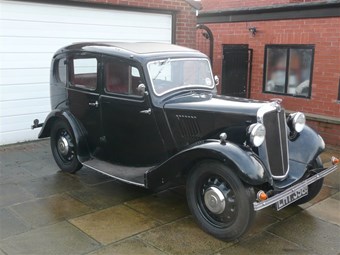
They look quaint and vulnerable but are rugged and reliable...
Morris Eight review
Morris Eights weren't one of the best-selling cars of the 1930s because they were cheap. Orbecause of their cuddly looks. Engineering excellence and ruggedness were the order of the day, meaning a fair number have survived into the 21st Century. A major plus point with the cars was their hydraulic brakes, which even today are surprisingly effective.
More than 221,500 examples were sold in saloon and tourer form between 1934 and 1938, when the replacement Series E arrived. There are no great differences between a Morris EightSeries I and II apart from the later car having a different radiator grille and being fitted with Easiclean wheels.
VITAL STATISTICS
Engine 918cc/4cyl/SV
Power 23.5bhp@3900rpm
Torque n/a
Maximum speed 58mph
0-60mph 41.9 sec
Fuel consumption 35-45mpg
Transmission RWD three-speed manual
WHAT TO LOOK FOR
CHASSIS ROT
These octogenarians are sturdy old things and can be forgiven for the odd rot spot. However, chassis can crack, particularly behind the front spring hangers and occasionally the rear ones, too. You really need to check every inch of the chassis for rust and, even worse, bodging. All of these can be repaired, of course, but it might be more prudent to avoid an Eight with an extremely sick chassis.
WOOD ROT/WOODWORM
All Series I and II cars have some wood in their frames, for example around the rear wheelarches, and also ash door frames; tourers are built around a wooden framework. Do check for excessive body shake and any evidence of wood that is rotten, incomplete, splintered or in the process of providing a nice dinner for woodworm. It would be well worth removing the rear seat to find out more. Firms such as Cooke Group in Leicester can do repairs.
AND MORE RUST
You also need to check carefully for corrosion around the (relatively easy to fabricate) running boards and the area where these meet the front wings, as well as the door bottoms and the area immediately around the rear wheelarches.
ENGINES
The Series I and II shared a 918cc sidevalve engine with white metal bearings. Most parts are available, but pistons are a little thin on the ground. Note that the Series E engin, although also a 918cc sidevalve, has a different cylinder head and pistons. Heads can crack, but repairs can be done. A useful supply of engines and parts came from auxiliary units form tanks some years ago, but these appear to have all passed through the system.
TRANSMISSION
Four-speed gearboxes from the later Series E can be fitted to replace the three-speed units in these cars. Worn synchrimesh most probably means a crash course in learning to double-declutch. First gear never had synchromesh, of course. Differentials are normally sound units, but it's not unknown for halfshafts to break. Clutches are the same as those used in Morris Minors,
STEERING BOXES
These can wear after many years but reconditioned units are available from Morrispares for £360. We would suggest this was a much better option than trying to replace the pegs, etc, yourself.
KINGPINS
These need regular lubrication every 500 miles. Early cars had bronze bushes and later Eights boasted the rolled variety; replacements for these are available.
MORRIS REGISTER
It's essential that Morris owners contact the Register as it is an excellent source of new and used spares.
OUR VERDICT
Pre-WWII cars have their own charm, which is never greater than on these cars. It would be almost impossible not to fall for the Morris Eight's loveable character, from its flowing running boards to the smell of the hot engine. You won't find anything to satisfy your urge for speed, but an Eight bowls along happily at 45-50mph. how lucky that these cars were so much nicer to drive than their main rivals the Austin Seven and Ford Model Y, both of which the Morris comprehemsively outsold. They're economical to run, easy to maintain and have excellent club and specialist support.